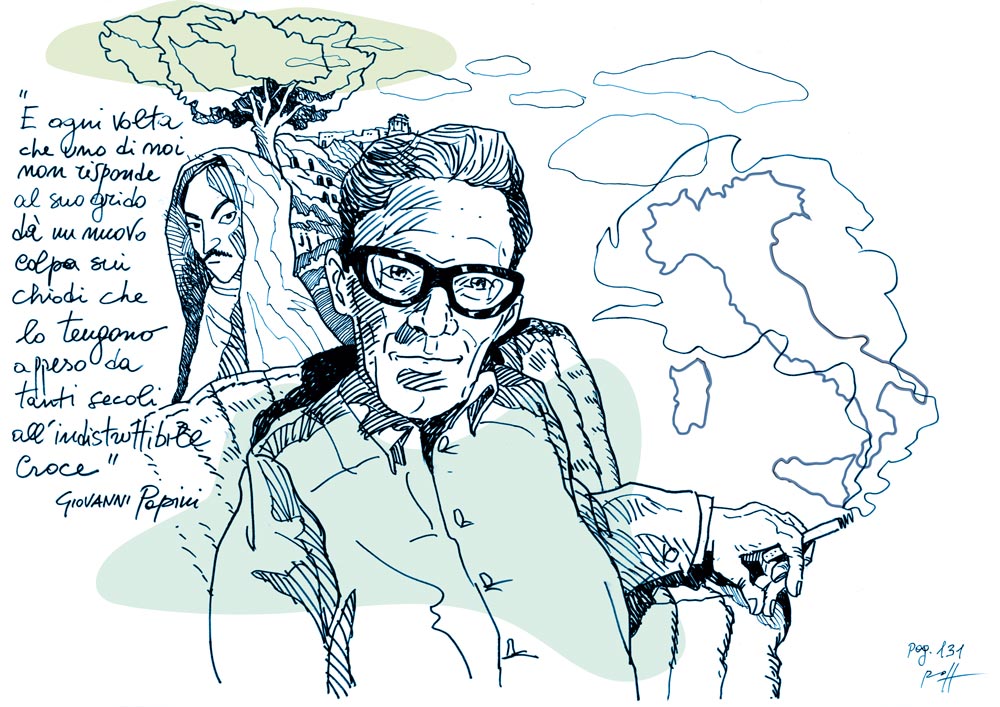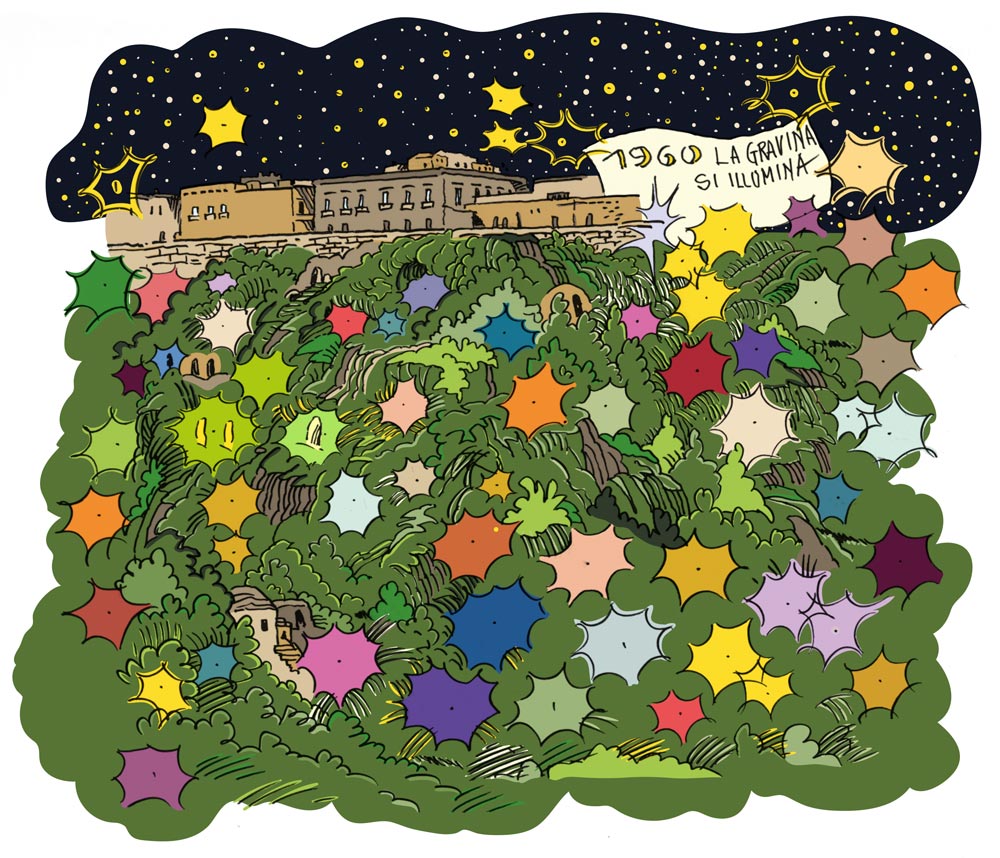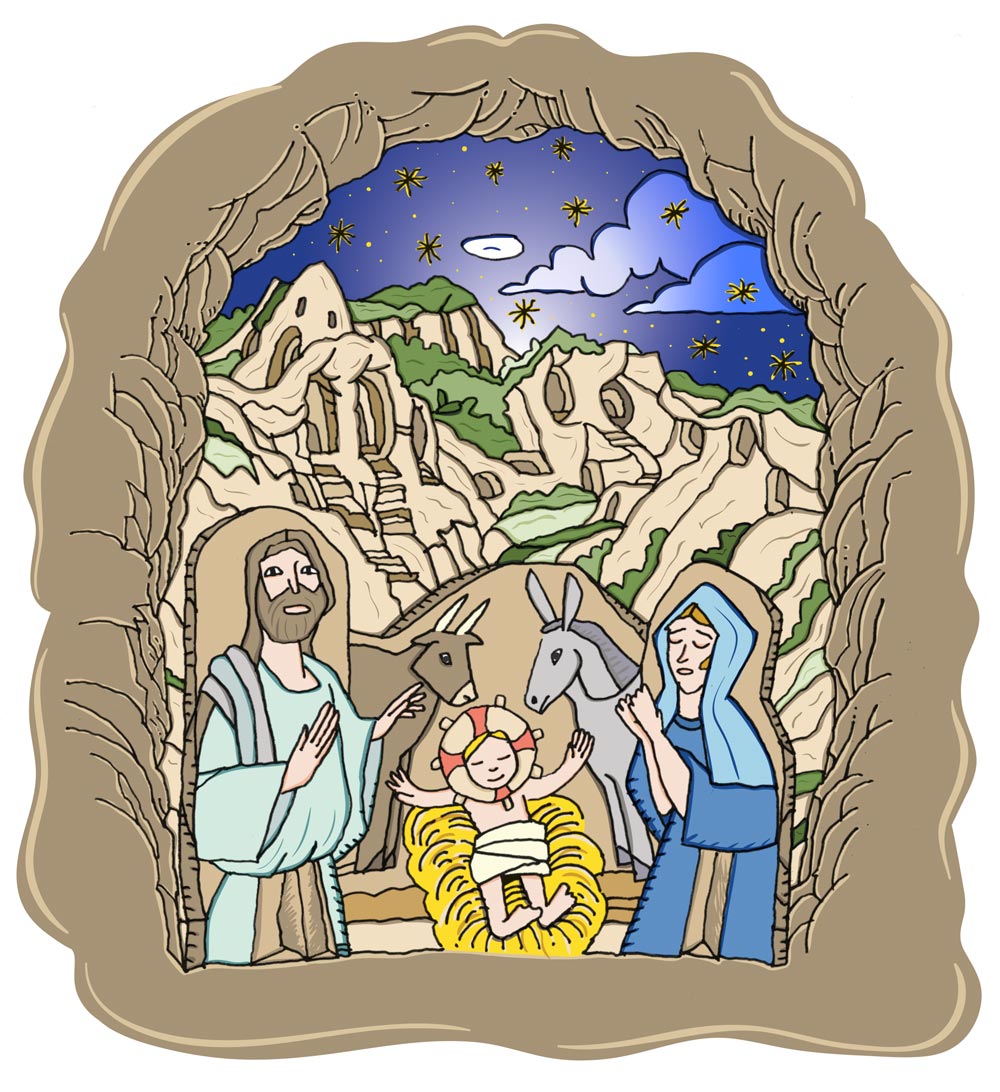
![]() Do you like this book?
Do you like this book?
Come to the library and read it!
The Palio dei Rioni (“Contest between the neighbourhoods”)
In the 1950’s, the city of Massafra rediscovers history divided into 5 districts
The “Palio dei Rioni” was one of the most spectacular events that the newborn Pro-Loco (a club promoting local activities) of the city offered at the end of the 1950’s. To re-unite the unity of the city of Massafra around a “symbol” that would have represented the memory of a historical event that occurred at the time of the Turkish raids in September 1594. The prompt came from a simple news item that took on a precise historical connotation and which materialised in the “Palio dei Rioni”.
The 5 districts of the city constituted a historical procession in Renaissance costume, armour costumes, horses draped in finery, pages, drums, damsels and many young people who immersed themselves in that ancient three-century-old atmosphere and tried to relive the memorable episode of the battle.

Famous characters of Massafra
Explore the main characters of the story

Pasolini
Among wizards and ravines, Massafra also bewitched Pier Paolo Pasolini, who in 1951 found himself visiting Apulia and was immediately charmed by it. The director saw among the tuff roads and the ravine the perfect setting to represent Capernaum in his celebrated film The Gospel according to Matthew.
The greatest Italian intellectual of the twentieth century defined Massafra as a “fossil and uncorrupted” city; he was essentially bewildered in every respect, the visit aroused in the writer extremely strong and intense sensations evoked by alleys and streets that regress until the heart of time.

The Pharmacist
The pharmacy of Pasquale Blasi alias Nonnù, in via Vittorio Veneto (the ancient Strada Maggiore), almost directly in front of the D’Eri house – where in the middle of the last century the secretions of the miraculous wax “Infant Jesus” took place – that pharmacy, up until almost the 1950’s was always a hustle and bustle of people.
Nonnù the unforgettable Massafrese apothecary/pharmacist was considered by the people as a kind of Samaritan, to turn to in particular moments of life and who was always, “gratis et amor Dei” – god’s grace and love, more than happy to offer his experience, his skills and his remedy. (1886–1967).

Cardinal Masella
Cardinal Masella was not shy, but discreet, and listened with evident interest and at the end asked for news about Massafra. At the centenary celebrations of the miracle of the Child Jesus, Cardinal Benedetto Aloisi Masella donated a gold crown.
Massafra, at least according to the chronicles, hosted a prince of the church for the first time in its history, the arrival of his eminence was a completely exceptional event.

The Massafra Proloco
To discuss the modern Massafra we must start from the sixties, when the Tourist Association PRO LOCO CITTA ‘di MASSAFRA was established, loved and harassed at the same time; precisely because it gave way to a series of initiatives to relaunch the community. Founded by a group of “crazy dreamers” and from a modern vision of the reality of the city. It was loved by many people who shared and were fascinated and enthusiastic about the planned initiatives that, each time, became reality.
Never closed in on itself, the Pro-Loco has over the years overcome reserves of preconceptions, quarrels and burning issues, the Pro-loco now works for a more evolved local community and to instil among the new generations a good dose of civic love closer to future expectations.

Pietro Diasparro
Lawyer of great virtues. A traditional man with sound values and principles, a gentleman who cannot be forgotten with indifference or left on the sidelines of civic history, when for decades he marked a prestigious point of reference that went far beyond the limited confines of our community.
His exemplary training, his undisputed cultural background, his profound confidence in the forensic arengo, the moral integrity that characterised him in the performance of his numerous and varied administrative offices, the innate vocation to the oratory art, were the characteristic notes of his existence, never touched by the slightest doubt and always upheld as an unrepeatable example of morality and attitudes beyond the norm.
His passing, almost sudden and immature, left a void that was difficult to fill; the declarations of affection and sympathy were many and significant: he was the purest of men who gave his name to the history of the city.
Places that have made the History of Massafra
Explore the places that made the history of Massafra from the 1950’s to the 1980’s.
There are moments that are fixed in time and history and that have made Massafra what it is today.


The Bari Taranto Motorway
The works began on 30 November 1971 and was part of a larger project for a motorway that was to continue along the entire Ionian coast, which however was never completed. On 6 December 1975 the last section as far as Massafra was opened, given that the A14 stops at the foot of the Ionian town and the initial ideal project, that is to reach the capital, was never completed.


The Gravina lights up
Towards the end of 1960, an unusual sight was seen by anyone looking out from the Garibaldi bridge gazing at the rock settlement in the Gravina di San Marco. Like an enduring dawn the wide valley filled with a new glow, the ravines, the cliffs, the caves, the trees and the herbs, were all lit up in new splendour.
The ancient ravine that holds our history, our homes and our faith now had a soul.


The Dreher Factory
In 1963, the Dreher factory was built in Massafra, commissioned by the Luciani family to expand its business in Southern Italy and was inaugurated on 29 July. With an investment of 6 billion Lire, the Luciani family created a 25-hectare production site which in the first year of activity packaged 500,000 bottles.
The important development and the centrality of the factory led to the hosting of the Giro d’Italia in 1967 with the finish line positioned right under the gatehouse of the factory.


The Nativity scene in the Gravina
The nativity scene in the Gravina is created and set in the natural scenery of Santa Marina village, in the heart of the Gravina di San Marco. Visible from the Garibaldi bridge, the silhouettes of the Madonna, Joseph and Baby Jesus represented a characteristic attraction for young and old for many Christmases.
Play with the history of Massafra from the 1950’s to the 1980’s
Have you read The Fence of Memories? Do you want to test yourself?
Try one of the games below!
Explore the Taralli Recipe
![]()
Test yourself and try to make your own taralli
with the original recipe.
Whether they are sweet or savoury, large or small, taralli are a delicious finger food snack typical of the gastronomic tradition of Apulia. Baked products made with dough made out of flour, water, white wine and extra virgin olive oil. Haven’t you ever made them?

We reveal a recipe to prepare your own homemade Taralli!
Ingredients:
400 grams of flour 00
100 ml of extra virgin olive oil
100 ml of dry white wine
1 tablespoon of salt
Fennel seeds or other spices as required to flavour according to your preference
To prepare the taralli, start by mixing the ingredients in a bowl. Pour in the flour, salt and oil and stir for a moment or two until the mixture is crumbly.
Now add the wine, and any other ingredients to flavour, mix everything and transfer the mixture on a pastry board, kneading it by hand for about ten minutes.
After this time, remove some small pieces of dough and shape them with your fingertips to form a 1 cm thick cord. Cut the cords into sections of about 6-8 cm.
Then join the tips by folding one end over the other to obtain a sort of donut. Meanwhile, boil a pot full of water and turn on the oven to preheat it to 200°C.
As you shape them, arrange the taralli on a tray lined with parchment paper. When you have formed all the taralli, dip a few pieces at a time in the boiling water with the help of a skimmer. As soon as they rise to the surface, they will be ready to be drained on a tray lined with a clean cloth; continue cooking all the others.
Transfer the taralli to a baking tray lined with parchment paper and bake in a static oven at 190°C for about 40-45 minutes or until golden.
Your taralli are ready, enjoy your meal!
Play Word Search
![]()
Play and find all the words
Find the Differences
![]()
Find the differences
click on the image and test yourself.

















 Contact
Contact